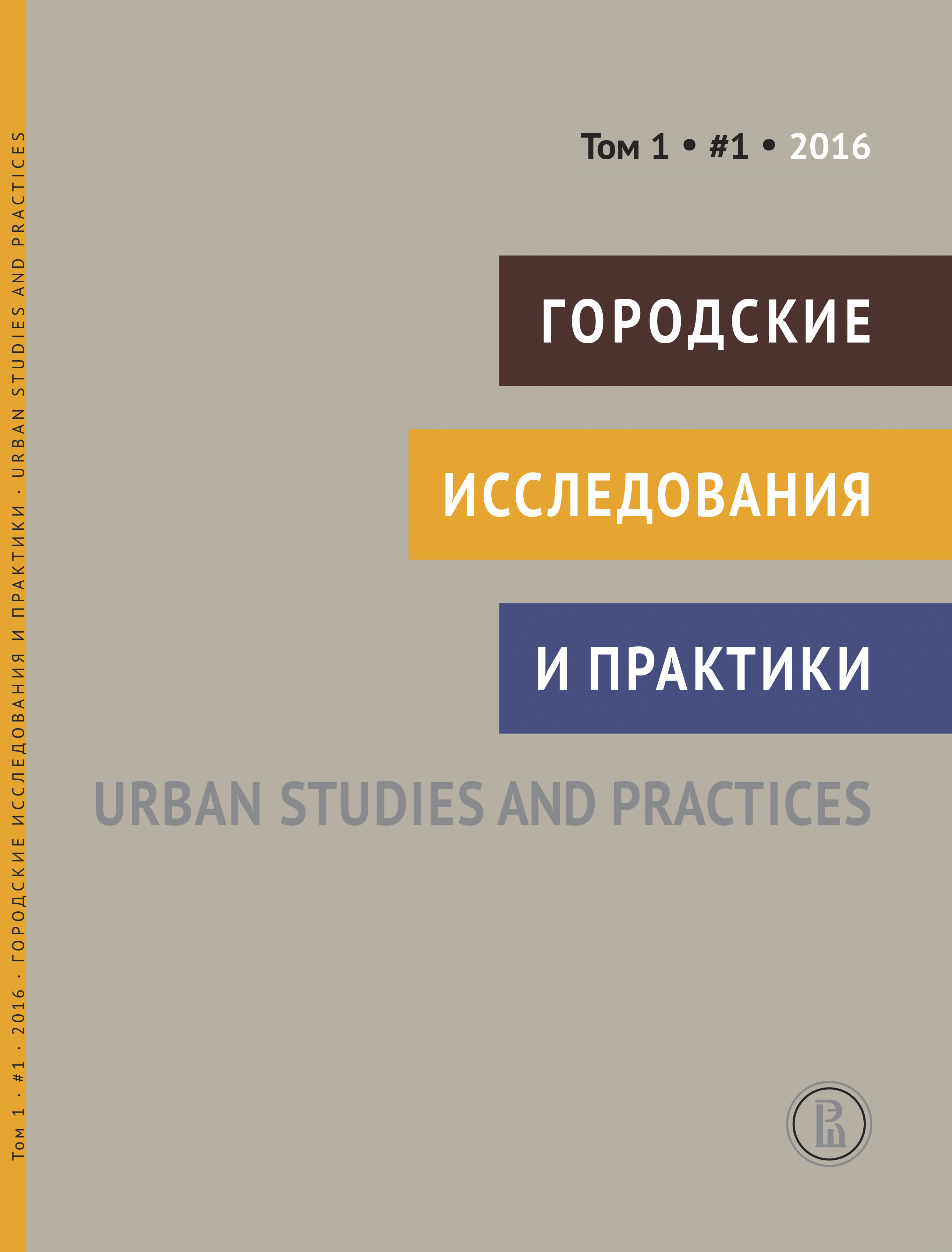Action Art in City
Abstract
The article gives a summary on critical theoretical and art practices dealing with urban space. From the birth of discourse in late XIX and the figure of flaneur in the texts of Bodler and Benjamin through mass protests of 1960s until our days’ cartography of “Realityv,” activism and movements for creating the spaces of alternative experience in post-city. Urban meta- narrative was formed by theories of W. Benjamin, A. Lefebre and Michele de Certeau. Numerous art movements of 60-s, for example situationists and provo, abandoned the representation of space and began to “produce” space in different urban practices such as derive and psychogeography. Then, in 1970-s and 1980-s, the relationships between art and city have become more flexible. Various art practices have been used in urban studies. Swiss researcher Lucius Burkhardt invented Strollology or Promenadology — special field of studies between art, urban studies and sociology. Numerous interdisciplinary studies and continuous “proletarisation” of art has led to very little distinction between everyday urban practices, art and activism. Urban meta- narrative, still influential, does not fully describe the situation. Modern scholars try to reimagine the urban. Contemporary city, post-city is a a place of total multiplicity, equivalent descriptions and alternative ontologies. Contemporary art and activist groups act as ontological sculptors of urban body, trying to create new modes of existence and imagination of urban space. Keywords: flaneur; perfoming arts; activist art; process
Downloads
References
Аксенова Ю. (2009) Франсис Алюс и его двенадцать прогулок // OpenSpace.ru. 25 февраля.
Режим доступа: [http://os.colta.ru/art/projects/8136/details/8234/](http://os.colta.ru/art/projects/8136/details/8234/) (дата обращения: 31.01.2016).
Арендт Х. (1997) Вальтер Беньямин / пер. с англ. Б. Дубина // Иностранная литература. No 12.
Режим доступа: [http://magazines.russ.ru/inostran/1997/12/benjamin03.html](http://magazines.russ.ru/inostran/1997/12/benjamin03.html) (дата обращения: 31.01.2016).
Беньямин В. (1996) Произведение искусства в эпоху его технической воспроизводимости. М.: Медиум.
Бодлер Ш. (1986) Об искусстве. М.: Искусство. С. 283–315.
Дёготь Е. (2008) Десять акций группы «Гнездо» // OpenSpace.ru. 27 февраля.
Режим доступа: [http://os.colta.ru/art/projects/109/details/998](http://os.colta.ru/art/projects/109/details/998) (дата обращения: 31.01.2016).
Жиль Ивен (Иван Щеглов). Формуляр нового урбанизма.
Режим доступа: [http://sagoth.dreamwidth.org/11804.html](http://sagoth.dreamwidth.org/11804.html) (дата обращения: 31.01.2016).
Лефевр А. (2015) Производство пространства. М.: Strelka Press.
Мазин В. (2005) Коллективное творчество (kollektive kreativitaet) // Художественный журнал. No 58/59 (сентябрь).
Режим доступа: [http://xz.gif.ru/numbers/58-59/kollektive-kreativitaet/](http://xz.gif.ru/numbers/58-59/kollektive-kreativitaet/) (дата обращения: 31.01.2016).
Обухова А. (1991) Эти как «Э.т.и.» [рукопись] // Александра Обухова. [Б. м.]: [Архив Музея современного искусства «Гараж»].
Серто М. де (2013) Изобретение повседневности. СПб.: Изд-во Европейского университета в Санкт-Петербурге.
Скотини М. (2005) Картографии “Realidad”: Художественные практики в Латинской Америке // Художественный журнал. No 58/59 (сентябрь).
Режим доступа: [http://xz.gif.ru/numbers/58-59/realidad/](http://xz.gif.ru/numbers/58-59/realidad/) (дата обращения: 31.01.2016).
Смарт А. (2012) Provo: радикальная транспортная форма для пешеходного содержания // НЛО. No 17.
Режим доступа: [http://magazines.russ.ru/nlo/2012/117/s31.html](http://magazines.russ.ru/nlo/2012/117/s31.html) (дата обращения: 31.01.2016).
Вчерашняя прогулка футурологов (1913) // Столичная молва. No 327. 15 сентября.
Amin A., Thrift N. (2002) Cities: Reimagining the Urban. Cambridge: Polity.
Jameson F. (1991) Postmodernism, or, the Cultural Logic of Late Capitalism. Durham, NC: Duke University Press.
Schimmelpennink L. (1966) Provo's Fietsenplan. Amsterdam.
Srnicek N., Williams A. (2015) Inventing the Future: Postcapitalism and a World Without Work. Verso Books.

